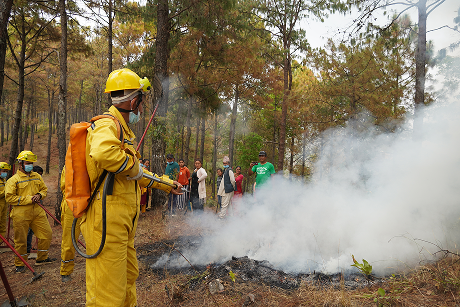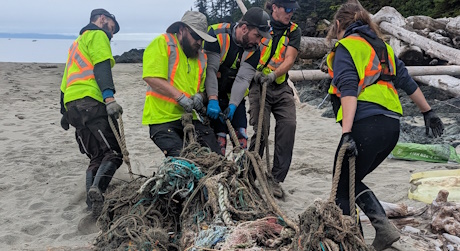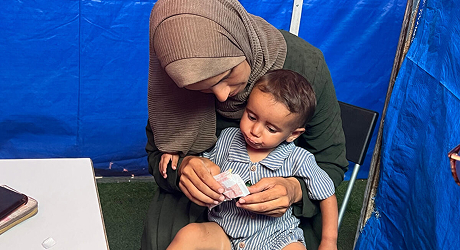Footprints Project
Since 2005, travelers like you have helped us change the world through micro-donations.
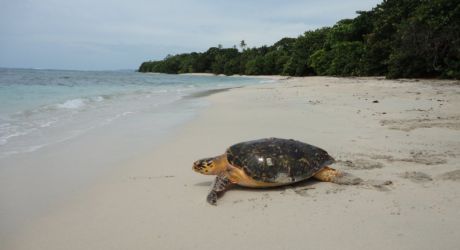
-
A total of
10011
Travelers
-
donated
$25007.41
(100% funded) -
to help improve
Environment
-
in
Panama
Project Background
Since 2003, STC has conducted a community-based sea turtle research and protection program in the Bocas del Toro region of Panama, an archipelago that includes some of the most important nesting sites for endangered leatherback and hawksbill sea turtles in the world.
There is growing concern among sea turtle biologists around the world that rising global temperatures and other impacts associated with climate change (such as rising seas and stronger storms) will negatively impact sea turtle populations. Because a sea turtle’s sex is determined by the average temperature of the sand in which it incubates, rising temperatures may be producing skewed sex ratios among hatchling sea turtles – resulting in greatly more female turtles than is normal in certain sea turtle populations. This may interfere with the ability of sea turtles to continue their positive population trends and reduce overall health of the species.
In addition, there is growing evidence that sea level rise and the increased frequency of strong storms and hurricanes may be harming the viability of key nesting sites. These nesting sites provide the perfect setting for STC to study the impacts of climate change and global warming on sea turtles by monitoring the nest incubation temperature, overall sand temperature and impacts from erosion. This research project was conducted to provide important information about the incubation and hatching success of two sea turtle species and reveal how climate change may be impacting the health and sex ratios of these populations.
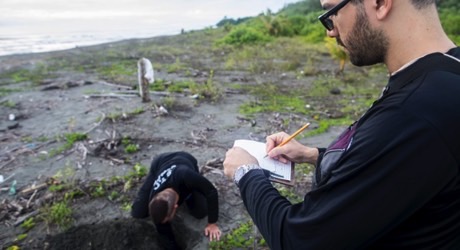
Project Goals
This project was carried out during the 2018 leatherback and hawksbill nesting seasons in the Bocas del Toro region of Panama. Financial support from World Nomads and the Footprints Network provided essential resources to carry out a program with the following primary goals:
Goal #1: Measure changes in sea turtle nest incubation temperature using data loggers placed inside nests and monitor throughout the incubation process.
Goal #2: Monitor beach temperature profiles at selected beach mile markers in the STC study area.
Goal #3: Excavate nests to determine the incubation and hatching success (the percentage of turtles that developed and hatched from their eggs).
Goal #4: Set up monitoring for rainfall and groundwater levels, combined with beach erosion monitoring to assess climate impacts on the nesting habitat over time.
Goal #5: Develop a protocol to evaluate physiological markers of hatchlings to verify whether nests are producing more females than males.
Goal #6: Select and train aspiring biologists from underserved Latin American countries in proven sea turtle monitoring and conservation techniques.
Goal # 7: Determine the best strategies for improving hatching success, such as relocating nests to shaded areas to lower the nest incubation temperature or to higher ground to protect them from high tides.
Project Results
Goal #1: With generous funding from the Footprints Network and World Nomads, Sea Turtle Conservancy implemented a new program to begin monitoring the impacts of climate change on sea turtle nests in the Bocas del Toro region of Panama. One element of this new research included deploying data loggers in sea turtle nests to measure changes in nest incubation temperature. While the nesting female sea turtles were laying eggs, trained staff placed the data loggers in the nest at three different locations: at the bottom, in the middle, and at the surface of the nest. After the nests hatched, around 65 days later, STC staff retrieved the data loggers and recorded the nest temperatures from each device. At Soropta Beach, staff recorded a maximum temperature of 35.32 C (95.58F) and a minimum temperature of 22.91 C (73.24F). In August, nest temperatures varied between 30 C and 26 C (86 and 79F). In September, the temperature varied between 28 C and 34 C (82 and 93F). This information will establish a baseline to which future nest temperature information will be compared to determine whether climate change is impacting the incubation and hatching success of leatherback and hawksbill sea turtles in the region.
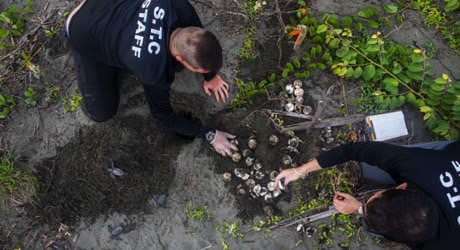
Goal #2: As part of its new program to measure climate impacts at its research sites in Panama, STC began to monitor beach temperature profiles at selected beach mile markers in the STC study area. Areas of beach that offered maximum shading from vegetation, or that had high ground, were recorded as areas to which nests could be relocated if they were laid in an area vulnerable to flooding, erosion or poaching in another section of beach. This information will allow STC staff to implement strategies to protect nests from the effects of climate change and global warming in the future.
Goal #3: Throughout the 2018 nesting season at Soropta Beach, one of STC’s study areas in the Bocas del Toro region, STC staff marked 73 nests to be evaluated for survivorship and hatching success as they were encountered during night patrols. Undisturbed leatherback sea turtle nests had a mean hatching and emerging success rate of 48.3% and 41.3%, respectively. Nests that were relocated by STC staff had a higher hatching rate of 56.1%; however the emergence success rate was slightly lower at 38 %. These figures offset somewhat in that more hatchlings were produced in the moved nests, but a slightly lower percentage of them emerged from the nest on their own. The end result is that more hatchlings survived from the relocated nests. STC staff often relocates naturally-laid nests due to the threat of erosion, inundation or poaching. Based on results from track surveys and nest excavations during the 2018 nesting season at Soropta Beach, STC estimates that 12,562 leatherback sea turtle hatchlings were produced at Soropta Beach in 2018.
Goal #4: STC began to monitor rainfall and groundwater levels during the 2018 nesting season in Bocas del Toro and assessed its impact on leatherback and hawksbill nests. In Panama, specifically, nests are at a high risk of being eroded during a storm (where the sand surrounding a nest is washed away) or flooded (where a nest is inundated with water from high tides or rising water table). Bad storms were common during the 2018 nesting season in Soropta; 36 leatherback nests were lost due to erosion (Table 1). More leatherback nests were lost to erosion in 2018 than last season. STC will monitor survivorship trends closely to determine whether more powerful storms are causing more nests to be eroded than in the past.
To try to ensure that nests survived, STC relocated 86 leatherback nests, 6 hawksbill nests and 2 loggerhead nests to higher ground. STC found that the hatching success rate was higher among nests that were relocated, so STC may need to relocate more nests as erosion and flooding become more prevalent in the future.
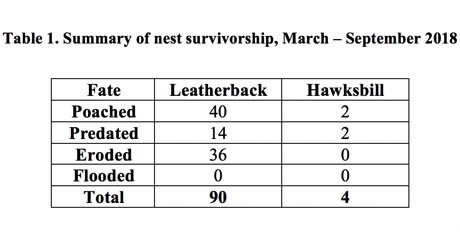
Goal #5: Because a sea turtle’s sex is determined by the average temperature of the sand in which it incubates, rising temperatures may be producing skewed sex ratios among hatchling sea turtles, resulting in greatly more female turtles than is normal in certain sea turtle populations. The pivotal nest temperature that will determine a sea turtle’s sex is both inherited and dependent on species, but the range of temperatures that can produce an all-female or all-male nest is very small – within a few degrees Celsius. STC is in the early stages of developing strategies to evaluate physiological markers of hatchlings to verify whether nests are producing more females than males at its Bocas del Toro study sites, and intends to employ these strategies in the future, when more nest temperature data is available.
Goal #6: STC’s Panama field supervisor employed 8 new aspiring biologists, all from local Panamanian communities, during the 2018 nesting season. To ensure that data were collected according to STC’s established protocol, staff held a three-day training workshop for the new monitors to teach them about sea turtle biology, the correct method for applying flipper tags, taking standard carapace measurements, identifying sea turtle species and marking nests using triangulation. The new beach monitors were required to complete the training course and pass an exam before conducting monitoring activities. Once trained, the local beach monitors conducted daily track surveys of STC’s 8 km monitoring zone in Soropta Beach from March through August 2018. STC strives to train its research assistants and beach monitors from underserved Latin American countries, and it is especially helpful when the assistants are members of the local community. By educating and training community members about the sea turtles that depend on the habitats in their hometown, STC is creating a foundation of conservation stewardship that we hope will ensure the protection of these species well into the future.

Goal #7: During the 2018 nesting season in Bocas del Toro, STC staff took action to relocate nests when they were naturally laid in areas at risk for erosion, flooding, or even poaching. Nests that were relocated to higher ground had a higher hatching success than nests that weren’t relocated, which is a possible signifier that relocating to higher ground is a successful strategy to combat against the effects of climate change, such as stronger storms and hurricanes. STC also moved nests to shaded areas on the beach, where sand is cooler in the afternoon. STC hopes that these strategies will lead to an increase in leatherback and hawksbill sea turtle survivorship in Bocas del Toro, one of the most important regions for these endangered species.
What Next?
Since 2003, STC has conducted a community-based sea turtle research and protection program in the Bocas del Toro region of Panama, an archipelago that includes some of the most important nesting sites for endangered leatherback and hawksbill sea turtles in the world. It is imperative for STC to continue studying the potential impacts of climate change on sea turtles in this region. With help from foundations such as the Footprints Network, STC is hopeful that its work will increase sea turtle survivorship in Bocas del Toro.
Can I Visit the Project?
STC regularly hosts guests at its fully-functioning biological field station in Soropta, Panama. Please reach out directly to the Sea Turtle Conservancy to arrange a visit.
Traveling soon? When you buy travel insurance with us, you can make a contribution towards a cause you care about.
Get a quote